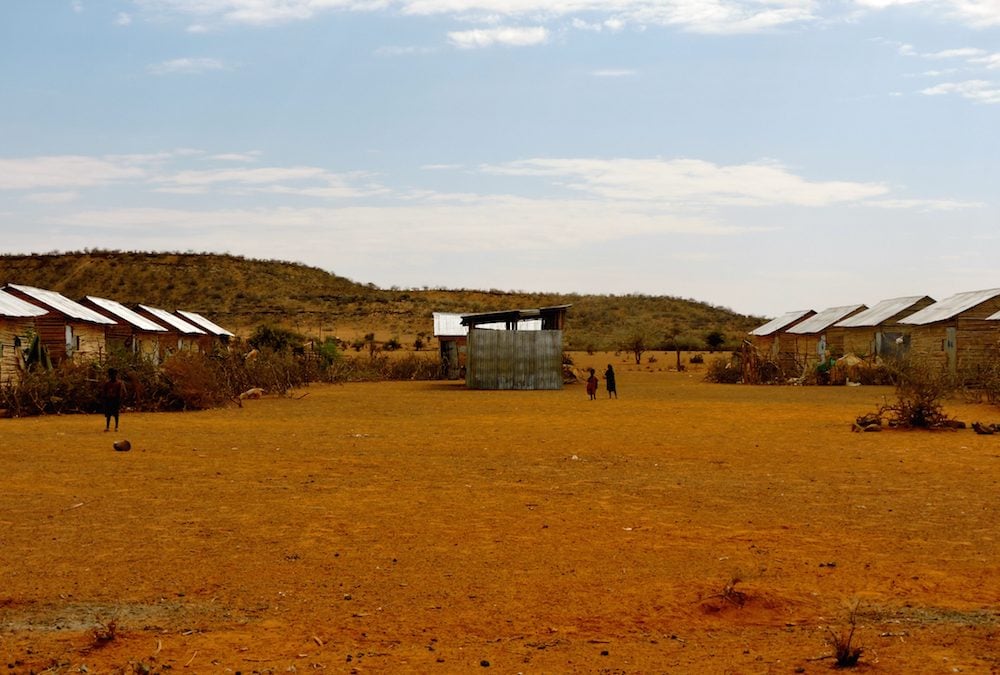Anicet Adjahossou’s dream job was to work in the humanitarian sector. Yet when he was finally hired by ICRC as a volunteer in 2008 to help build a refugee camp in Burundi, the experience was underwhelming. Having been trained in engineering and urban planning, he was hoping his skills could help make the place more liveable. But the new camp had already been designed, without leaving much room for changes. He found it too military-like; its rigid grid structure didn’t enable community building. From a planner’s perspective, the setup didn’t make sense.
“You have to think about the camp as a human settlement, and not as a structure where people are packed into houses without any connection to their community,” he says.
Two years later, Benin-born Adjahossou was following a training session on emergencies with ICRC when it dawned on him he was being taught the same design and building processes he had seen implemented in Burundi. “I had a wake-up call,” he remembers. “The training manual featured a rather traditional way of organizing the camps.” If he was to build better camps, he’d have to find a way to break the rules.
That opportunity came in 2012, as he was working for UNHCR in the Dollo Ado refugee camp in Ethiopia, which hosts over 200,000 refugees from neighbouring Somalia. During the peak of the emergency crisis, workers had to accommodate thousands of new refugees, and the camp was growing fast. Adjahossou convinced his colleagues to start a small pilot project within one of the camp’s new sections, in order to experiment with a different layout. Together with a team of anthropologists, he met with groups of refugees to discuss their needs and identify housing solutions that would be better suited to their lifestyles.
Refugees eventually selected a layout that organized houses into a series of U-shaped compounds. The new design would facilitate interactions between families by providing larger communal spaces, but also enhance security by removing houses off the main streets. And refugees could even have enough space to care for a small garden in each compound.
Implementing a new design during the emergency phase wasn’t easy, and Adjahossou had to work hard to convince his colleagues the idea could work. The approach also required that he spend more time on the ground to make sure each structure was being built according to the plan. But when the emergency calmed down, more workers understood the need for durable housing solutions.
“People started understanding the logic behind the changes when the time came to stabilize the camps,” he recalls.
In 2014, Adjahossou was selected as an Innovation Fellow by UNHCR Innovation and UNHCR’s Global Learning Center, which allowed him to spend more time refining the new camp design. In addition to compounds, he created neighbourhoods and villages (each village being comprised of 10 neighbourhoods, in turn formed by 8 compounds, each made of 13 houses) and made sure these new concepts also translated into changes in the vocabulary used by humanitarian workers. “Blocs and sectors didn’t mean anything to refugees,” he says (he also prefers not to use the term “camp” anymore, and instead talks about “sustainable human settlements.”) He completed the design with a street grid, as well as key facilities such as schools, water distribution points, markets and health posts.
Adjahossou is now working on applying his methodology to other camps managed by UNHCR, notably in Kakuma, Kenya. Among key questions to answer is to know whether the compound model can be replicated with other communities and cultures. “You have to be flexible and take into account the lifestyle of these populations, and be able to bring certain changes,” he says.
In the future, he would like to work on enabling a better integration of refugee settlements within host communities, thereby breaking the isolation that refugees living in camps often experience. By using another tool in the designer’s arsenal, the master plan, Adjahossou would like to bring refugees and local populations to share core resources, such as water, electricity, education and health services. Under an integrated vision, hospitals, schools and markets would no longer be built at the centre of the camp, but rather in strategic points accessible by all. This approach would also involve bringing the humanitarian and development sectors together to work on a concerted approach for community development.
But for now, Adjahossou is focusing on writing down the lessons learned during the Dollo Ado experience and hopefully change the guidelines used by humanitarian agencies when setting up new camps.
“Our indicators and standards are not functional anymore, but nobody dares changing them,” he deplores.
He’s convinced agencies can both answer the immediate needs of new refugee populations, and plan for the longer term. “My goal is to be able to quickly set up a sustainable camp, even during an emergency,” he says.

